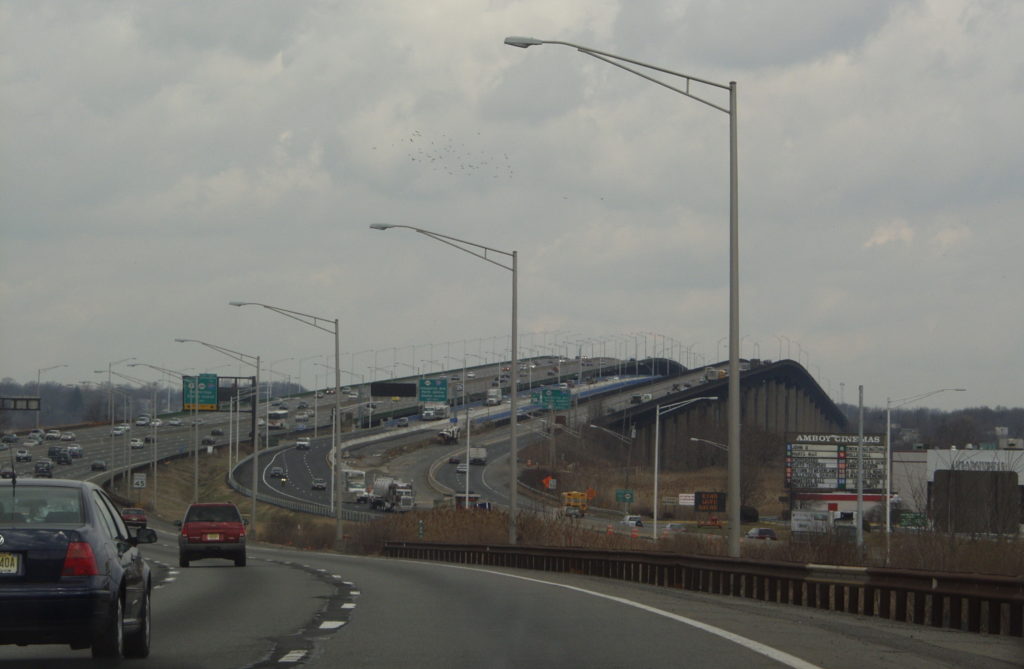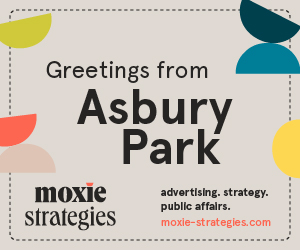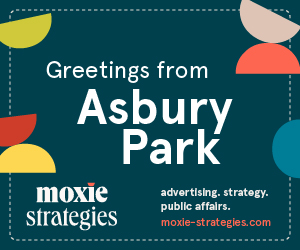Monmouth Poll: Washington not Paying Enough Attention to Infrastructure

Most Americans say that Donald Trump and the federal government in general are not making the nation’s transportation infrastructure enough of a priority. The Monmouth University Poll also finds that few Americans give the state of their local roads and bridges a positive rating, but there is some evidence that most are not really aware of the current condition of their local infrastructure.
A majority of Americans (55%) say Pres. Trump is not giving enough attention to the country’s transportation infrastructure. Just 26% say he is giving this issue enough attention and another 4% say he is giving it too much attention. The White House unveiled a proposal in February that it claims will stimulate more than a trillion dollars in infrastructure investment nationwide. Less than half of the public think that it is very (10%) or even somewhat (34%) likely that this plan will become a reality. Another 25% say it is not too likely and 25% say it is not at all likely to happen.
If the infrastructure plan is not enacted, most Americans (53%) would blame both Trump and Congress equally. The remainder would primarily blame Congress (36%) rather than the president (7%) for the lack of action on this proposal. Most Democrats (69%) and independents (56%) would place the blame equally on Trump and Congress, but most Republicans (63%) would point the finger squarely at Congress.
“Despite the fact that the White House has declared an ‘Infrastructure Week’ many times over the past year, the American public sees very little concrete evidence that this is a priority,” said Patrick Murray, director of the independent Monmouth University Polling Institute.
More than 6-in-10 Americans (62%) say the federal government is not spending enough on transportation infrastructure projects in their local area, compared to just 19% who say the feds are spending enough and 9% who say they are spending too much. State governments do not do much better, with 57% saying that their respective state governments are not spending enough on local road and bridge projects, compared with 25% who say they are spending enough and 10% who say they are spending too much.
Americans are divided on whether their local area is getting its fair share of infrastructure resources, with 46% saying it is and 43% saying it is not. Residents who live in the Southwest and Mountain States are the most likely to say their area is getting its fair share of transportation investment (54%) followed by just under half those in both the West Coast (48%) and Southeast (48%) regions of the country. Residents in the Midwest (43%) and Northeast (41%) portions of the United States are somewhat less likely to feel their local area is getting its fair share.
Just under 1-in-5 Americans (18%) say that most of the bridges in their area need urgent repair and another 25% say some of their local bridges need urgent repair. A majority say either just a few (32%) or no local bridges (19%) need urgent repair. Monmouth pollsters also examined public opinion on local infrastructure based on the current conditions of local bridges using county-level data compiled by the Federal Highway Administration. In counties where fewer than one-third of the bridges are rated as being in “good” condition, a majority of residents say that most (24%) or some (30%) of their local bridges need urgent repair. This concern is less widespread, but only somewhat, in areas where the bridges are in better condition. Among those living in counties where between a third and half of the bridges are rated as being in “good” condition, more than 4-in-10 say that most (18%) or some (25%) of those bridges need urgent repair. In counties where between half and two-thirds of bridges are in “good” condition, just under 4-in-10 of these residents say that most (15%) or some (24%) of their bridges need urgent repair. However, even in counties where more than two-thirds of the bridges are deemed to be in “good” condition, 1-in-3 still say that most (12%) or some (21%) of their local bridges are in urgent need of repair.
Americans are slightly more likely to say that their local roads need urgent repair when compared to how they feel about their bridges. This includes 34% who say most roads in their area urgently need repair, 31% say some of them need repair, 27% say a few of the roads need repair, and just 7% say none of their local roads need urgent repair.
Overall, one-third of the public rate the quality of their local road and bridge infrastructure as excellent (4%) or good (30%), while 41% say it is just fair and 23% say it is poor. Almost half of those who live in the Southwest or Mountain States (48%) rate their local transportation infrastructure positively (excellent or good). This compares to around 1-in-3 residents in other parts of the country, including the West Coast (37%), Southeast (34%), Midwest (32%), and Northeast (28%). There are no significant differences to this opinion based on the FHA rating of bridge conditions in each county.
Opinion is divided on whether the condition of one’s local transportation infrastructure is helping (25%) or hurting (25%) growth in the area’s economy. However, nearly half the public (45%) say that the infrastructure situation has no impact on their local economy either way. There are also no significant differences to this opinion based on the FHA rating of bridge conditions in each county.
“One of the more interesting findings here is how little differentiation there is in opinion of infrastructure’s impact on the local economy when we use FHA bridge ratings as a proxy for infrastructure quality. Perhaps those who live in better maintained areas simply have higher expectations, or it could be that many Americans are simply unaware of the state of the infrastructure in their own backyard,” said Murray.
The Monmouth University Poll was conducted by telephone from April 26 to 30, 2018 with 803 adults in the United States. The results in this release have a margin of error of +/- 3.5 percentage points. The poll was conducted by the Monmouth University Polling Institute in West Long Branch, NJ.
QUESTIONS AND RESULTS
(* Some columns may not add to 100% due to rounding.)
[Q1-24 previously released.]
Now I’d like to ask about transportation infrastructure, including roads and bridges.
25. Is the federal government spending the right amount, not enough, or too much on transportation infrastructure projects?
|
|
April |
|
Right amount |
19% |
|
Not enough |
62% |
|
Too much |
9% |
|
(VOL) Don’t know |
10% |
|
(n) |
(803) |
26. Is your state government spending the right amount, not enough, or too much on transportation infrastructure projects?
|
|
April |
|
Right amount |
25% |
|
Not enough |
57% |
|
Too much |
10% |
|
(VOL) Don’t know |
7% |
|
(n) |
(803) |
27. When it comes to government funding for transportation infrastructure, do you think your local area is getting its fair share of resources or getting less than its fair share of resources? [CHOICES WERE ROTATED]
|
|
April |
|
Getting its fair share of resources |
46% |
|
Getting less than its fair share of resources |
43% |
|
(VOL) Getting more than its fair share |
0% |
|
(VOL) Don’t know |
10% |
|
(n) |
(803) |
28. Would you rate the quality of the transportation infrastructure of roads and bridges in your local area as excellent, good, only fair, or poor?
|
|
April |
|
Excellent |
4% |
|
Good |
30% |
|
Only fair |
41% |
|
Poor |
23% |
|
(VOL) Don’t know |
1% |
|
(n) |
(803) |
29. Would you say the quality of the transportation infrastructure in your area is helping your local economy grow, is holding your local economy back, or is having no impact on your local economy?
|
|
April |
|
Helping local economy grow |
25% |
|
Holding local economy back |
25% |
|
Having no impact on local economy |
45% |
|
(VOL) Don’t know |
5% |
|
(n) |
(803) |
[QUESTIONS 30 and 31 WERE ROTATED]
30. How many of the roads in your area do you think are in need of urgent repair right now– most of them, some of them, just a few, or none of them?
|
|
April |
|
Most of them |
34% |
|
Some of them |
31% |
|
Just a few |
27% |
|
None of them |
7% |
|
(VOL) Don’t know |
1% |
|
(n) |
(803) |
31. How many of the bridges in your area do you think are in need of urgent repair right now – most of them, some of them, just a few, or none of them?
|
|
April |
|
Most of them |
18% |
|
Some of them |
25% |
|
Just a few |
32% |
|
None of them |
19% |
|
(VOL) Don’t know |
6% |
|
(n) |
(803) |
32. Is President Trump giving enough attention to the country’s transportation infrastructure, not giving enough attention, or giving too much attention?
|
|
April |
|
Giving enough attention |
26% |
|
Not giving enough attention |
55% |
|
Giving too much attention |
4% |
|
(VOL) Don’t know |
15% |
|
(n) |
(803) |
33. Earlier this year, President Trump proposed a plan to stimulate more than a trillion dollars in infrastructure investment. How likely is it that such a plan will become a reality – very, somewhat, not too, or not at all likely?
|
|
April |
|
Very likely |
10% |
|
Somewhat likely |
34% |
|
Not too likely |
25% |
|
Not at all likely |
25% |
|
(VOL) Don’t know |
6% |
|
(n) |
(803) |
34. Who will be more to blame if this infrastructure plan does not become a reality – President Trump or Congress, or both equally?
|
|
April |
|
President Trump |
7% |
|
Congress |
36% |
|
Both equally |
53% |
|
(VOL) Don’t know |
4% |
|
(n) |
(803) |
METHODOLOGY
The Monmouth University Poll was sponsored and conducted by the Monmouth University Polling Institute from April 26 to 30, 2018 with a national random sample of 803 adults age 18 and older, in English. This includes 401 contacted by a live interviewer on a landline telephone and 402 contacted by a live interviewer on a cell phone. Telephone numbers were selected through random digit dialing and landline respondents were selected with a modified Troldahl-Carter youngest adult household screen. Monmouth is responsible for all aspects of the survey design, data weighting and analysis. Final sample is weighted for region, age, education, gender and race based on US Census information. Data collection support provided by Braun Research (field) and SSI (RDD sample). For results based on this sample, one can say with 95% confidence that the error attributable to sampling has a maximum margin of plus or minus 3.5 percentage points (unadjusted for sample design). Sampling error can be larger for sub-groups (see table below). In addition to sampling error, one should bear in mind that question wording and practical difficulties in conducting surveys can introduce error or bias into the findings of opinion polls.
|
DEMOGRAPHICS (weighted) |
|
Self-Reported |
|
26% Republican |
|
41% Independent |
|
33% Democrat |
|
|
|
49% Male |
|
51% Female |
|
|
|
30% 18-34 |
|
34% 35-54 |
|
36% 55+ |
|
|
|
65% White |
|
12% Black |
|
15% Hispanic |
|
8% Asian/Other |
|
|
|
MARGIN OF ERROR |
|||
|
unweighted sample |
moe (+/-) |
||
|
TOTAL |
|
803 |
3.5% |
|
REGISTERED VOTER |
Yes |
681 |
3.8% |
|
No |
122 |
8.9% |
|
|
SELF-REPORTED PARTY ID |
Republican |
209 |
6.8% |
|
Independent |
319 |
5.5% |
|
|
Democrat |
258 |
6.1% |
|
|
IDEOLOGY |
Liberal |
183 |
7.3% |
|
Moderate |
316 |
5.5% |
|
|
Conservative |
271 |
6.0% |
|
|
GENDER |
Male |
400 |
4.9% |
|
Female |
403 |
4.9% |
|
|
AGE |
18-34 |
194 |
7.0% |
|
35-54 |
228 |
6.5% |
|
|
55+ |
379 |
5.0% |
|
|
RACE |
White non-Hispanic |
558 |
4.2% |
|
Other |
230 |
6.5% |
|
|
COLLEGE GRADUATE |
No degree |
460 |
4.6% |
|
4 year degree |
333 |
5.4% |
|
|
INCOME |
<$50K |
294 |
5.7% |
|
$50 to <100K |
234 |
6.4% |
|
|
$100K+ |
208 |
6.8% |
|
|
2016 VOTE BY COUNTY
|
Trump 10+ pts |
307 |
5.6% |
|
Swing <10pts |
162 |
7.7% |
|
|
Clinton 10+ pts |
334 |
5.4% |
|










Leave a Reply